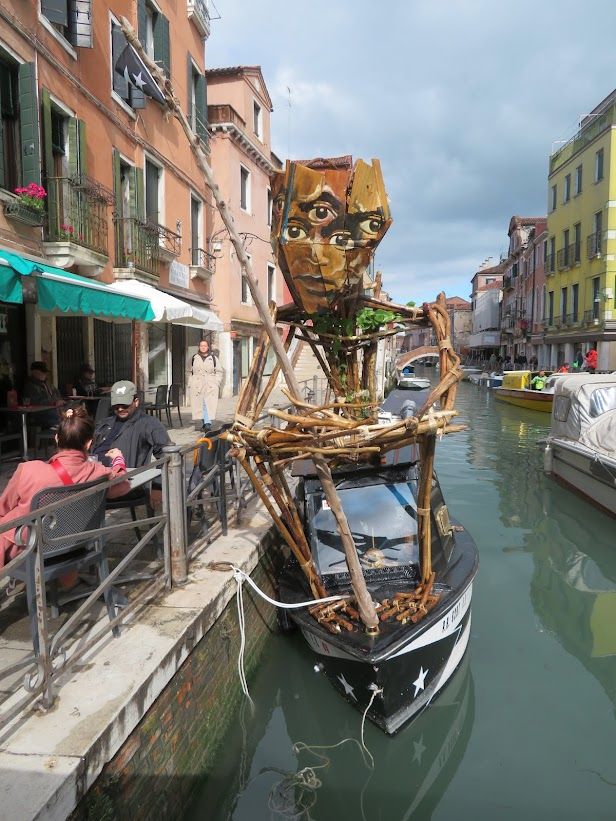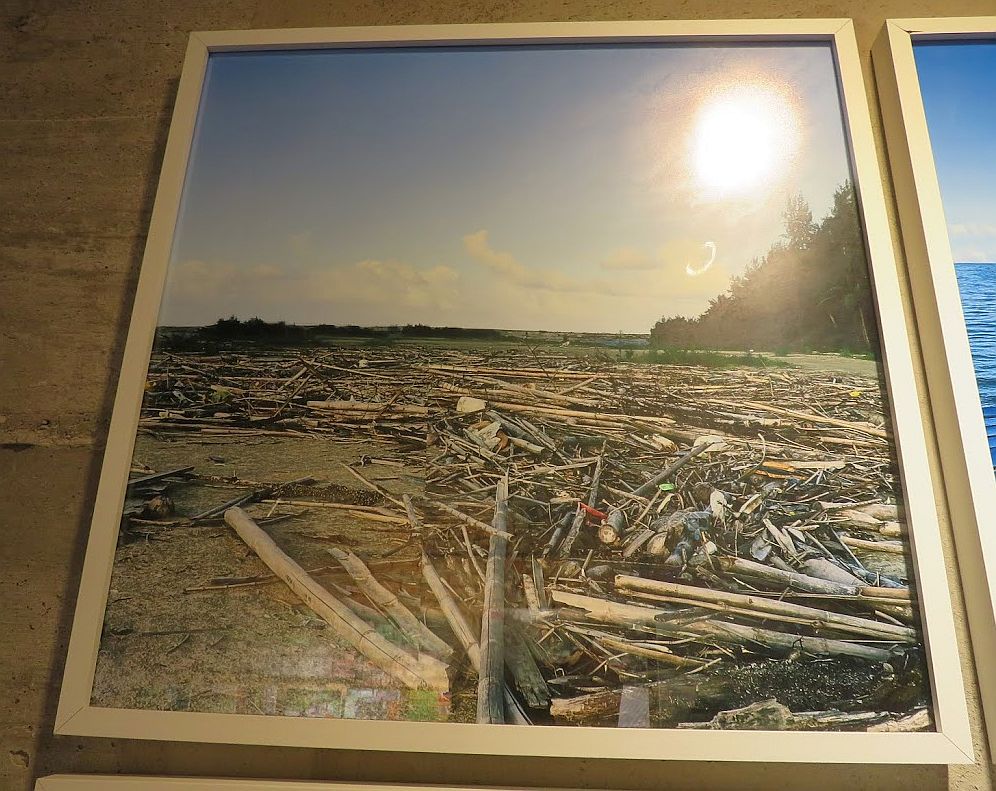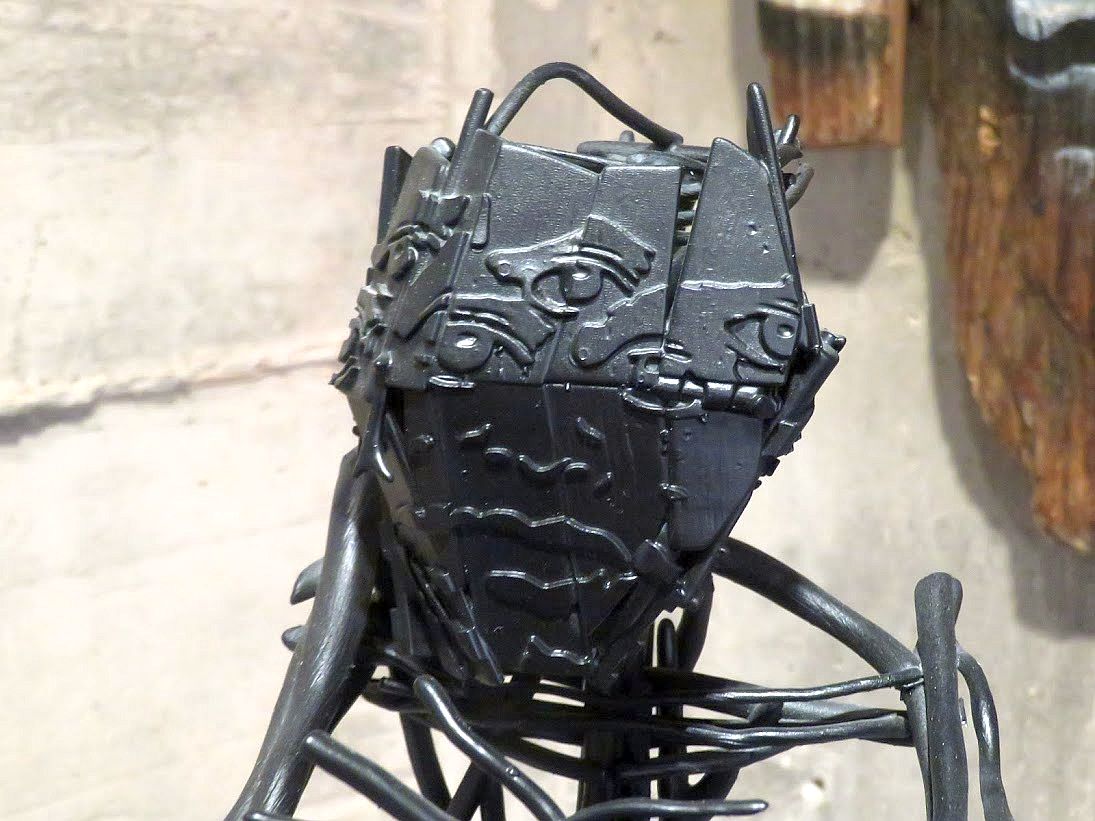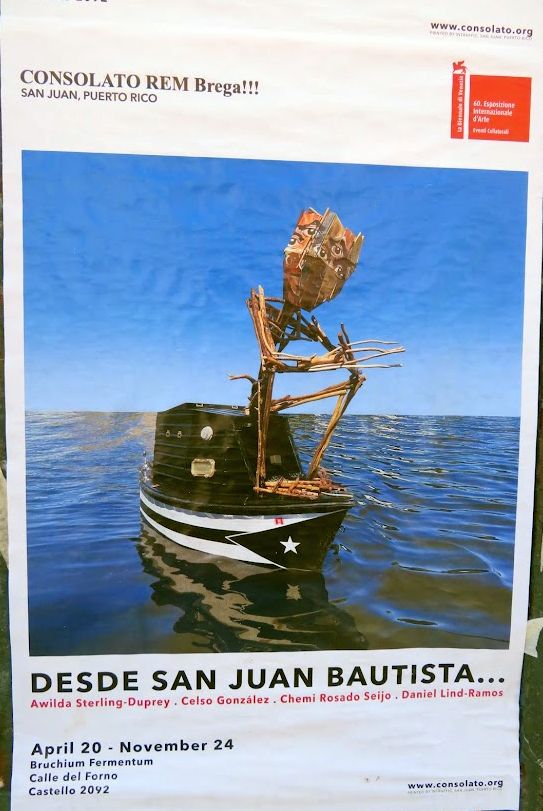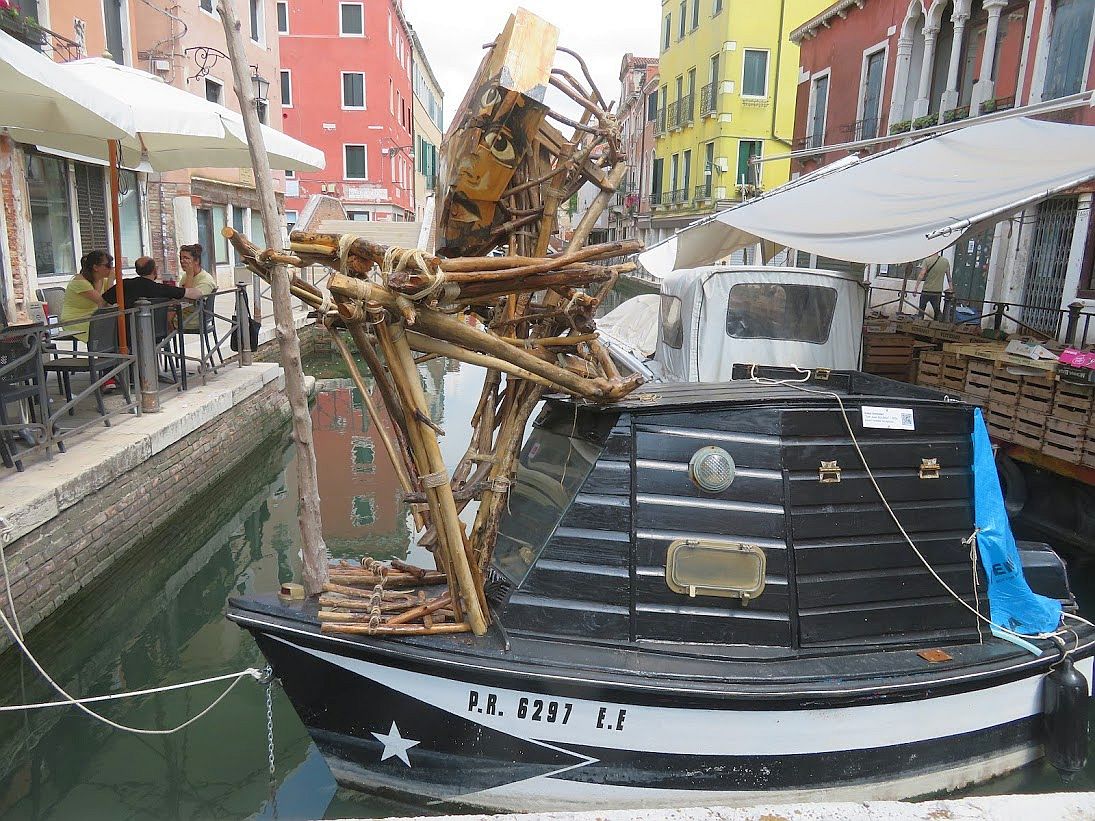
I thought I’d update the life, times, travails, and tribulations of San Giovanni Battista (Saint John the Baptist), visiting Venice as a work of art in the guise (or as they say here, in the clothes) of San Juan Bautista, patron saint of the island of Puerto Rico, as you know.
After unpacking his imaginary baggage back in April, he was left to perch pensively atop a little boat in the canal at the bottom of via Garibaldi. That was fine. Then one night a tempestuous rainstorm swept through, and the next morning he had been removed. He might have blown over or been in danger or damaged or something. I felt sorry, because he was supposed to hang out with us down here in the bilge of the Good Ship Castello till the Biennale closes on November 24.
Then suddenly he was back. But he was shorter somehow, a little less majestic — the storm had taken something out of him, but I couldn’t figure out what — yet he was just as contemplative as before. Maybe more so. I sensed that the experience had sobered him.
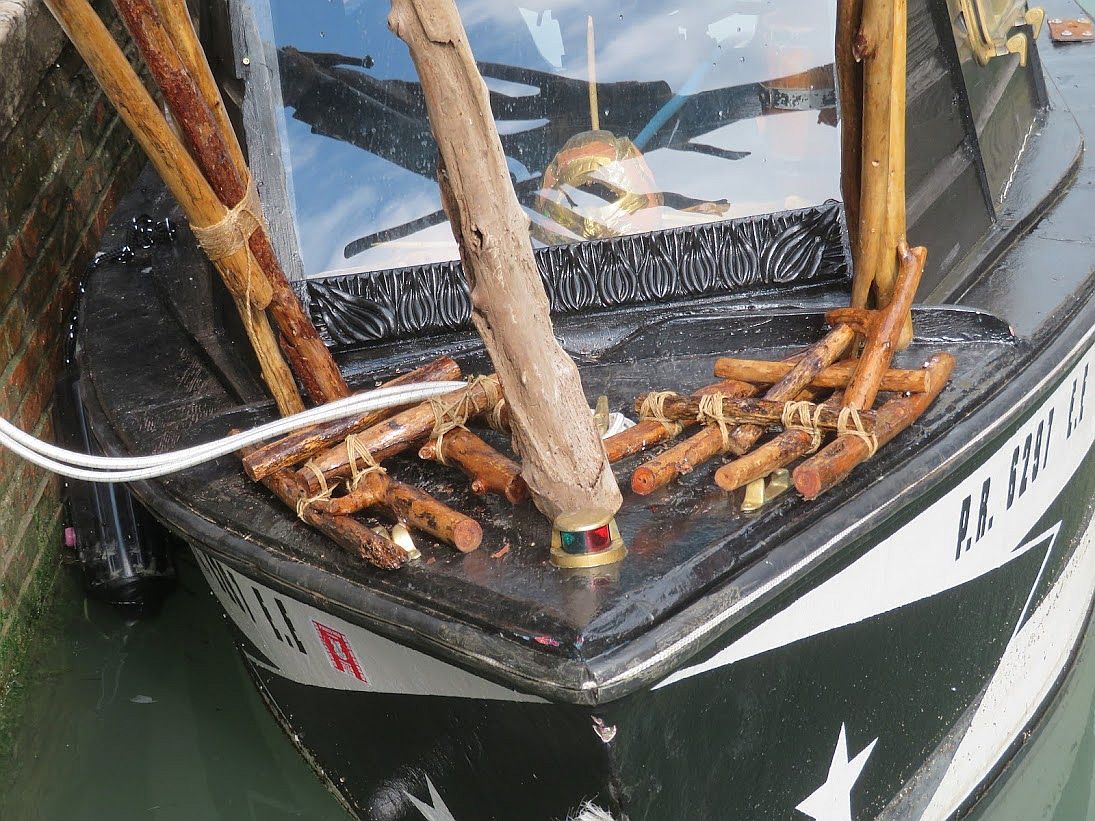
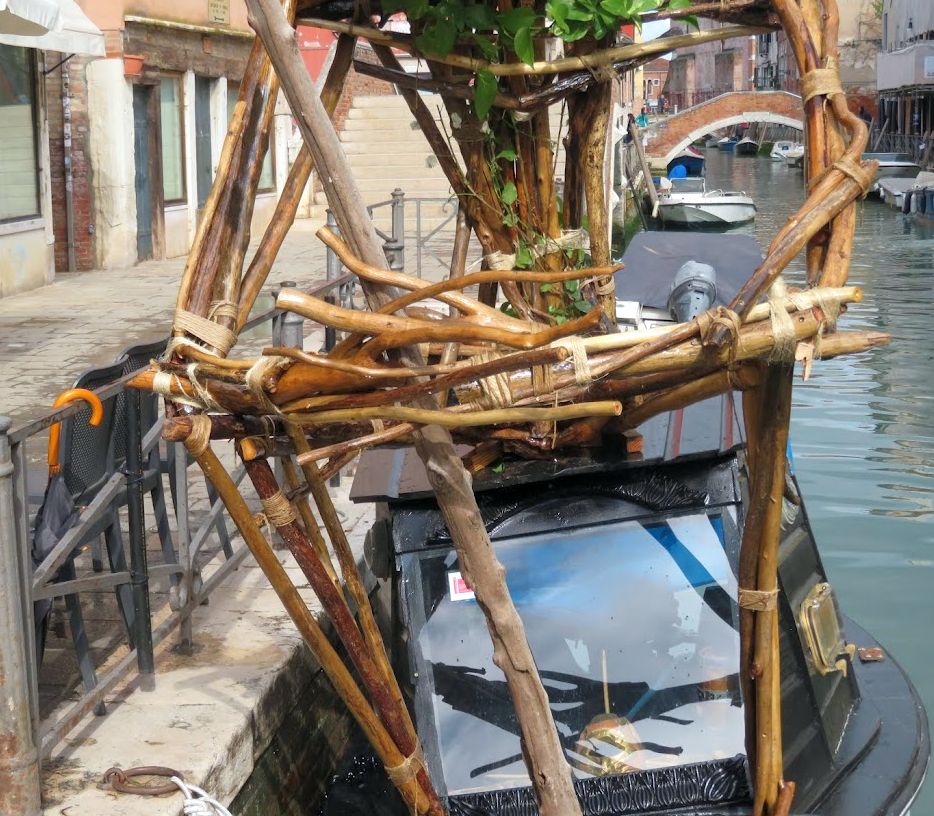
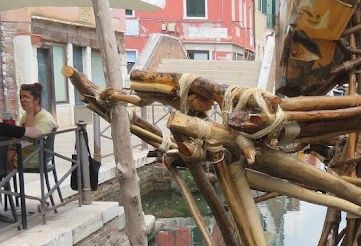
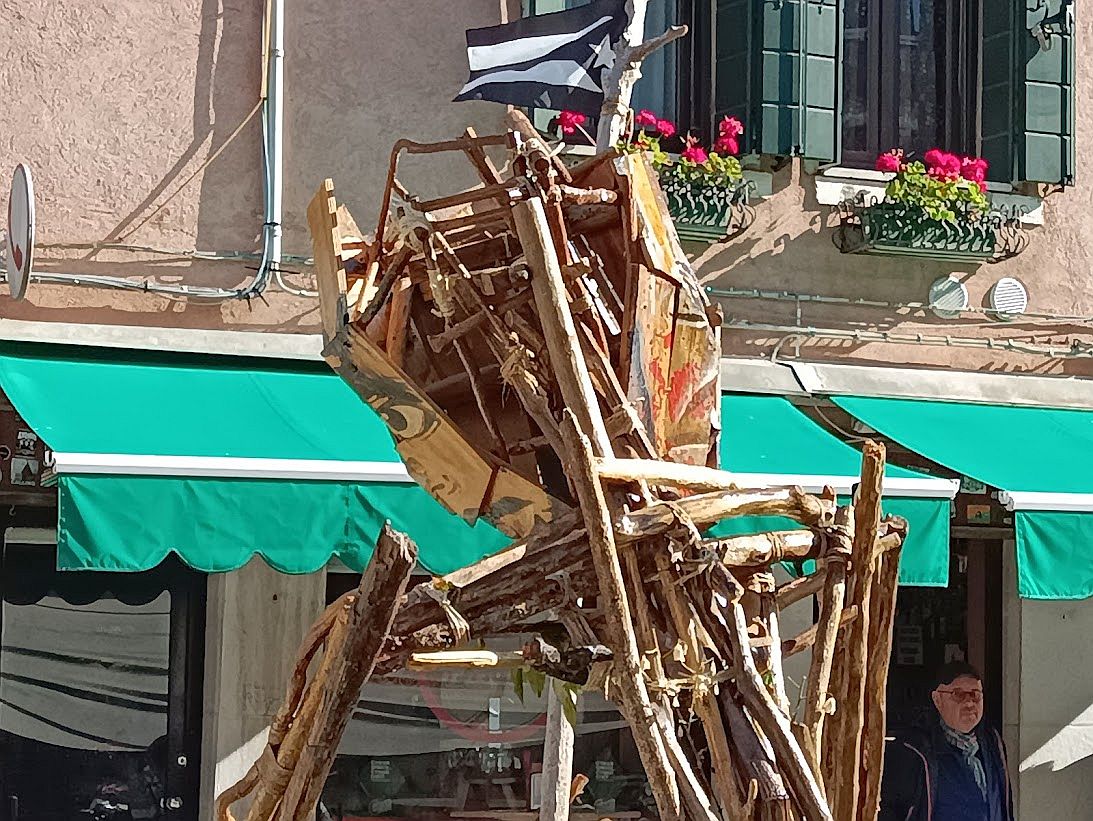
Time passed, but just when it seemed normal to have him hanging around two men showed up, disassembled him, and carted him (it/them/those) away, down via Garibaldi under the blazing sun. The boat remains, but the saint has left the building.
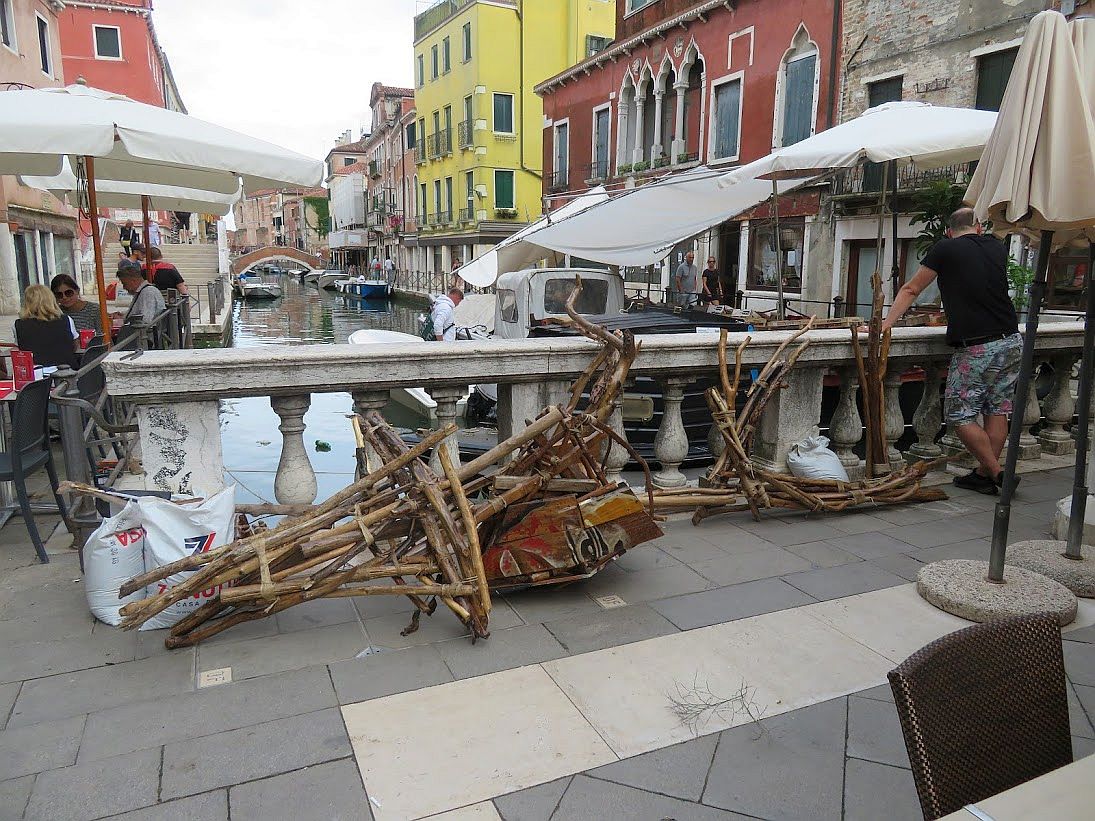
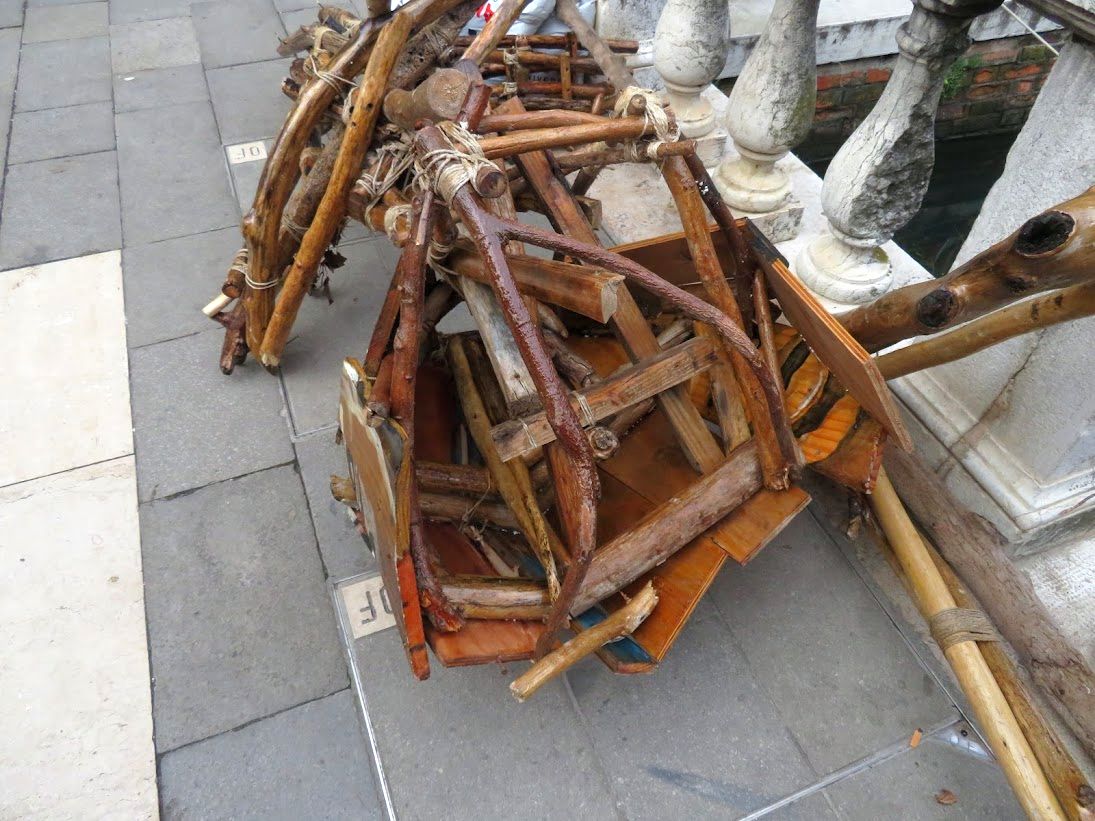
I went by the small exhibition space dedicated to him to discover his fate. The young Greek woman who had been engaged to answer questions on the art and the artists’ cooperative was startled to hear that Saint John was no longer at his post. This was awkward; she had been encouraging visitors to go down the street to see the creation in the flesh (technically, in the driftwood). Nobody had thought to let her know that the work was no longer working. And therefore she knew only what I knew.
I passed by the space some time later, and another young woman explained that the problem is that when it rains the little boat fills with water and becomes unstable as a base on which to position a saint made of driftwood. Solution: Remove the saint and — one hopes — bail the boat. Not sure about that last part, though. It just floats there, all alone, possibly aware that an abandoned boat really is nothing more than driftwood waiting for the next storm.
